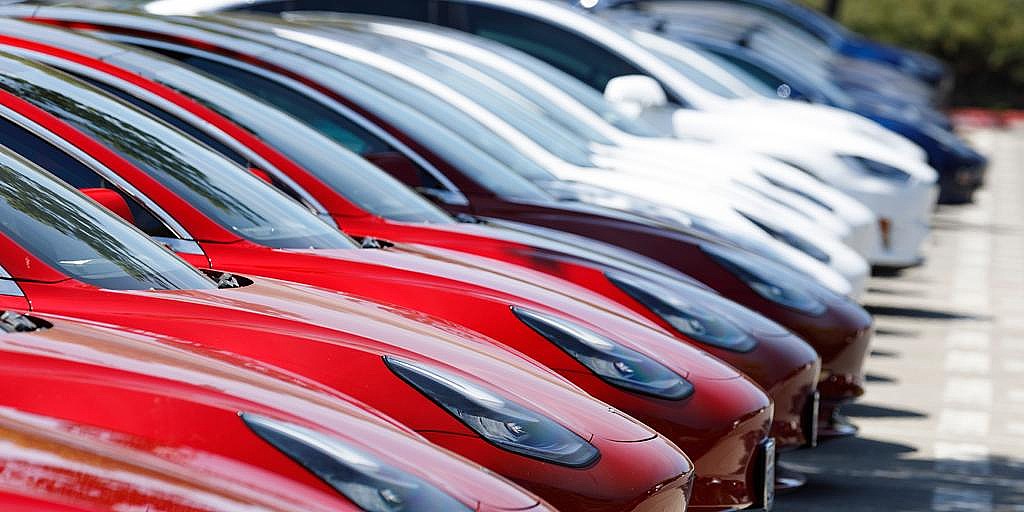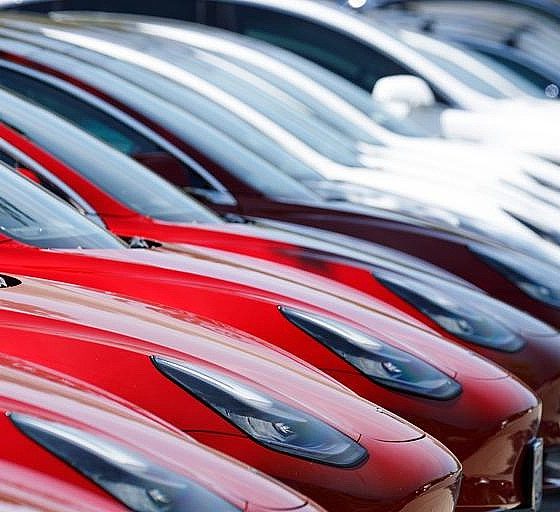

News
Tesla at a tipping point: How a focus on safety and features is building a formidable car brand
Last week, JD Power revealed the results of a study about the public’s perception of electric vehicles and autonomous driving technologies. The results of the survey were not that encouraging, with 68% of the respondents stating that they had zero experience with electric cars. The majority of the study’s demographic also stated that they would not consider an EV as their next car purchase.
Yet, despite these results, one particular vehicle seems to be bucking the trend. In June, Tesla sold just shy of 40,000 Model 3 across the globe, making it the best-selling electric car worldwide. Following the Model 3 was the BAIC EU-Series from China, which was far behind at almost 18,000 units sold. Third place in June’s global EV sales rankings was the BYD Yuan, which sold 6,566 units. The Model 3’s feat is impressive, considering that the market is just beginning to seriously embrace electric cars as a viable alternative to gas-powered automobiles.
Baillie Gifford’s recently-released Annual Financial Report noted that Tesla had reached a milestone with the Model 3, as exhibited by the vehicle becoming the US’ best-selling passenger car by revenue over the past four quarters. This milestone could have been achieved by Tesla because the company has and continues to develop a reputation for building great cars that just happen to be electric, not electric cars that just happen to be good. By emphasizing the innate strengths of electric vehicles, Tesla has created a brand that is becoming synonymous with safety and bleeding-edge features.
The Tesla Model 3, Model S, and Model X are three of the safest vehicles on the road today. This is partly due to the vehicles being designed from the ground up as electric cars. With their generous crush zones and rigid frames, Teslas are capable of protecting their occupants, even in potentially serious crashes. Some of these incidents are shared online through the Tesla community and beyond, and they help spread the word that the company’s vehicles are among the safest vehicles on the road today.
The aftermath of these incidents usually follows a similar pattern too, with a Tesla getting damaged and the other vehicle coming out worse for wear. An example of this could be found in this recent incident involving an otherwise intact Model 3 toppling a fire hydrant after getting rear-ended by a Subaru. As could be seen in pictures of the crash’s aftermath, the gas-powered car looked like it hit a wall when it smashed into the Model 3.
Teslas are essentially computers on wheels, and this is one of the reasons why the Model S, Model X, and Model 3 are among the very few vehicles on the road that can receive new features through free over-the-air updates. This has become a crucial part of the Tesla ownership experience, as cars that are handed over to customers only get better with time. Some of these features, such as Sentry Mode and TeslaCam, have even helped owners catch individuals that vandalize their vehicles.
In a recent report, the Highway Loss Data Institute stated that Teslas are among the least likely vehicles to get stolen in the United States, with the Model S and X nearly 90% less likely to attract thieves than the average automobile. The reasons for this could vary, but the fact that Teslas are equipped with a suite of security features, and the fact that the National Crime Information Center tracked 112 recovered Teslas out of 115 stolen vehicles between 2011 and May 2018, establishes the company’s electric cars as vehicles that are pretty tricky to steal.
Tesla only commands a tiny fraction of the overall automotive market today. Even with the aggressive ramp of the Model 3, Tesla is still far from breaching the mass markets that are dominated by low-cost vehicles that have been around for decades. This does not mean to say that Tesla is not making progress, as the company is steadily increasing its reach in the auto industry’s premium segment. And thanks to the company’s innovations and unique approach to its vehicles, Tesla is making itself into a brand that simply attracts a ton of interest.
An example of this could be seen in Japan recently, where Tesla showcased the Model 3 (which is yet to be distributed to the country) at the Haneda Airport. Not too far from the Model 3 was an exhibit of the gas-powered B-Class from Mercedes-Benz, a premium vehicle from a veteran carmaker that is synonymous with luxury. The interest attracted by the two vehicles among the people at the Japanese airport was very telling.

Elon Musk
Elon Musk and Tesla AI Director share insights after empty driver seat Robotaxi rides
The executives’ unoccupied tests hint at the rapid progress of Tesla’s unsupervised Robotaxi efforts.

Tesla CEO Elon Musk and AI Director Ashok Elluswamy celebrated Christmas Eve by sharing personal experiences with Robotaxi vehicles that had no safety monitor or occupant in the driver’s seat. Musk described the system’s “perfect driving” around Austin, while Elluswamy posted video from the back seat, calling it “an amazing experience.”
The executives’ unoccupied tests hint at the rapid progress of Tesla’s unsupervised Robotaxi efforts.
Elon and Ashok’s firsthand Robotaxi insights
Prior to Musk and the Tesla AI Director’s posts, sightings of unmanned Teslas navigating public roads were widely shared on social media. One such vehicle was spotted in Austin, Texas, which Elon Musk acknowleged by stating that “Testing is underway with no occupants in the car.”
Based on his Christmas Eve post, Musk seemed to have tested an unmanned Tesla himself. “A Tesla with no safety monitor in the car and me sitting in the passenger seat took me all around Austin on Sunday with perfect driving,” Musk wrote in his post.
Elluswamy responded with a 2-minute video showing himself in the rear of an unmanned Tesla. The video featured the vehicle’s empty front seats, as well as its smooth handling through real-world traffic. He captioned his video with the words, “It’s an amazing experience!”
Towards Unsupervised operations
During an xAI Hackathon earlier this month, Elon Musk mentioned that Tesla owed be removing Safety Monitors from its Robotaxis in Austin in just three weeks. “Unsupervised is pretty much solved at this point. So there will be Tesla Robotaxis operating in Austin with no one in them. Not even anyone in the passenger seat in about three weeks,” he said. Musk echoed similar estimates at the 2025 Annual Shareholder Meeting and the Q3 2025 earnings call.
Considering the insights that were posted Musk and Elluswamy, it does appear that Tesla is working hard towards operating its Robotaxis with no safety monitors. This is quite impressive considering that the service was launched just earlier this year.
Elon Musk
Starlink passes 9 million active customers just weeks after hitting 8 million
The milestone highlights the accelerating growth of Starlink, which has now been adding over 20,000 new users per day.

SpaceX’s Starlink satellite internet service has continued its rapid global expansion, surpassing 9 million active customers just weeks after crossing the 8 million mark.
The milestone highlights the accelerating growth of Starlink, which has now been adding over 20,000 new users per day.
9 million customers
In a post on X, SpaceX stated that Starlink now serves over 9 million active users across 155 countries, territories, and markets. The company reached 8 million customers in early November, meaning it added roughly 1 million subscribers in under seven weeks, or about 21,275 new users on average per day.
“Starlink is connecting more than 9M active customers with high-speed internet across 155 countries, territories, and many other markets,” Starlink wrote in a post on its official X account. SpaceX President Gwynne Shotwell also celebrated the milestone on X. “A huge thank you to all of our customers and congrats to the Starlink team for such an incredible product,” she wrote.
That growth rate reflects both rising demand for broadband in underserved regions and Starlink’s expanding satellite constellation, which now includes more than 9,000 low-Earth-orbit satellites designed to deliver high-speed, low-latency internet worldwide.
Starlink’s momentum
Starlink’s momentum has been building up. SpaceX reported 4.6 million Starlink customers in December 2024, followed by 7 million by August 2025, and 8 million customers in November. Independent data also suggests Starlink usage is rising sharply, with Cloudflare reporting that global web traffic from Starlink users more than doubled in 2025, as noted in an Insider report.
Starlink’s momentum is increasingly tied to SpaceX’s broader financial outlook. Elon Musk has said the satellite network is “by far” the company’s largest revenue driver, and reports suggest SpaceX may be positioning itself for an initial public offering as soon as next year, with valuations estimated as high as $1.5 trillion. Musk has also suggested in the past that Starlink could have its own IPO in the future.
News
NVIDIA Director of Robotics: Tesla FSD v14 is the first AI to pass the “Physical Turing Test”
After testing FSD v14, Fan stated that his experience with FSD felt magical at first, but it soon started to feel like a routine.

NVIDIA Director of Robotics Jim Fan has praised Tesla’s Full Self-Driving (Supervised) v14 as the first AI to pass what he described as a “Physical Turing Test.”
After testing FSD v14, Fan stated that his experience with FSD felt magical at first, but it soon started to feel like a routine. And just like smartphones today, removing it now would “actively hurt.”
Jim Fan’s hands-on FSD v14 impressions
Fan, a leading researcher in embodied AI who is currently solving Physical AI at NVIDIA and spearheading the company’s Project GR00T initiative, noted that he actually was late to the Tesla game. He was, however, one of the first to try out FSD v14.
“I was very late to own a Tesla but among the earliest to try out FSD v14. It’s perhaps the first time I experience an AI that passes the Physical Turing Test: after a long day at work, you press a button, lay back, and couldn’t tell if a neural net or a human drove you home,” Fan wrote in a post on X.
Fan added: “Despite knowing exactly how robot learning works, I still find it magical watching the steering wheel turn by itself. First it feels surreal, next it becomes routine. Then, like the smartphone, taking it away actively hurts. This is how humanity gets rewired and glued to god-like technologies.”
The Physical Turing Test
The original Turing Test was conceived by Alan Turing in 1950, and it was aimed at determining if a machine could exhibit behavior that is equivalent to or indistinguishable from a human. By focusing on text-based conversations, the original Turing Test set a high bar for natural language processing and machine learning.
This test has been passed by today’s large language models. However, the capability to converse in a humanlike manner is a completely different challenge from performing real-world problem-solving or physical interactions. Thus, Fan introduced the Physical Turing Test, which challenges AI systems to demonstrate intelligence through physical actions.
Based on Fan’s comments, Tesla has demonstrated these intelligent physical actions with FSD v14. Elon Musk agreed with the NVIDIA executive, stating in a post on X that with FSD v14, “you can sense the sentience maturing.” Musk also praised Tesla AI, calling it the best “real-world AI” today.








